As has become abundantly clear recently, COVID-19 isn't going away; in fact, it's striking more and more of my friends and family who had successfully avoided it for years. At this point, we have ample evidence that masks work to drastically reduce the spread of COVID; however, none of the local, state, or federal governments are willing to take the low-cost, high-return step of requiring mask usage in public settings, so most people just don't bother. The fact that I'm usually the only one wearing a mask in any given space, combined with the increased contagiousness of the Omicron family of variants, means that I've been spending the last few months wearing N95 masks1 a lot of the time. Given that I had an unavoidable plane trip2 coming up, and spurred by the recent New York Times article on elasticmeric masks, I decided that it was time to investigate reusable (and potentially both more-protective and more-comfortable) options. In general, reusable respirators (often called "elastomeric" because of the rubbery plastic they're made of) offer better filtration and much better seals than disposable masks -- if you wear glasses and have problems with fogging due to a poorly-fit disposable mask, you should strongly consider an elastomeric mask. After some research, I ended up buying three different reusable half-facepiece respirators, and this post has some brief impressions of them.
Just a note up front: I am (of course) not a doctor and can't give you medical advice. As far as I know, all of these respirators are suitable for reducing your risk of catching COVID-19, but you should probably talk to an actual expert. You can find some useful information on the CDC's page about elastomeric respirators.
GVS Elipse P100 Respirator with Source Control
$33.95, 133g
The GVS Elipse with Source Control is essentially the only NIOSH-certified reusable respirator with filtered exhalation in the US market. This means that it provides both extremely good filtration for air I'm breathing in (it's a NIOSH-certified P1003 filter), and also protects other people from anything I'm breathing out (in this case, by exhaling through the same P100 filter). It was recommended by several sources, but has been heavily backordered4, so I wasn't sure I could get it in time for my trip. In fact, it ended up being delivered on the day we returned, so I've only used it for grocery shopping so far.
Pros
- Compact
- Great filtration
- No nose pinching
- Great seal (doesn't leak at all on any side, even when talking
- Wide straps are very comfortable on the head and neck
- So cheap!
Cons
- Substantially muffles my voice
- Pleated HEPA filter rubs against my cheeks when breathing and is irritating
- Hard to take off (has to go over your whole head)
- Probably hard to clean5
3M 6000-Series with Source Control Valve
$45.56 as configured, 185g
Knowing that the GVS Elipse wasn't going to be obtainable in time, I decided to go with the cheap and common option of the 3M 6000-series6: specifically, the 3M Half-Facepiece 6300 Respirator combined with the 3M 7093 P100 filter and the 3M Series 604 exhalation valve filter. This gives me the same P100 coverage for incoming air as the GVS, and gives substantial protection for people around me (based on the ASTM F2101 standard). This setup is primarily targeted for industrial use, and you may have seen contractors wearing these when doing stuff like painting in enclosed spaces.
It's possible to make this setup a little lighter and less bulky by replacing the 7093 cartridges with 3M 2091 P100 filters, but those look even sillier and offer no protection against grabby toddlers.
Pros
- Great filtration
- Relatively easy to take off due to the quick-release clip on the lower strap
- Great seal; absolutely no air leakage
- Valves make me sound like Darth Vader7
- Does a pretty good job controlling condensation
- Available on Amazon (1, 2, 3) if you're into that sort of thing
Cons
- Heavy
- Substantially muffles my voice
- Some nose-pinching after a few hours
- Thin neck strap causes irritation
- With exhalation valve filter attached, looks a bit like a WW1 gas mask and freaks people out
- Complicated to clean
FloMask Pro
$89.99, 63g
The last elastomeric mask I've been using is something totally different: the FloMask is designed for consumer use (as opposed to industrial/medical use like the other two masks). It's not NIOSH-certified, but aims for a similar 99% filtration level, and was one of the Phase 1 winners for HHS DRIVe's Mask Innovation Challenge. I learned about this, of all places, from blogger Violet Blue's Patreon8.
Pros
- Very comfortable
- Lightweight and easy to carry
- Easy to talk and breathe through
Cons
- Filters are hard to change (and easy to mess up so that you have leakage if you let the filter wrinkle)
- Fit takes some getting used to since it's above the chin. If you don't line it up right, you will get air leaking around the nose, which kind of defeats the purpose of wearing an elastomeric mask in the first place
- Expensive! Even the replacement filters are expensive, at $1.19/ea.
- Somewhat to take off (has to go over your whole head, but does have easy-to-loosen bottom strap)
Disposable N95 Masks
$0.94/ea, 7g
Just for comparison, here are the N95s I wear9:
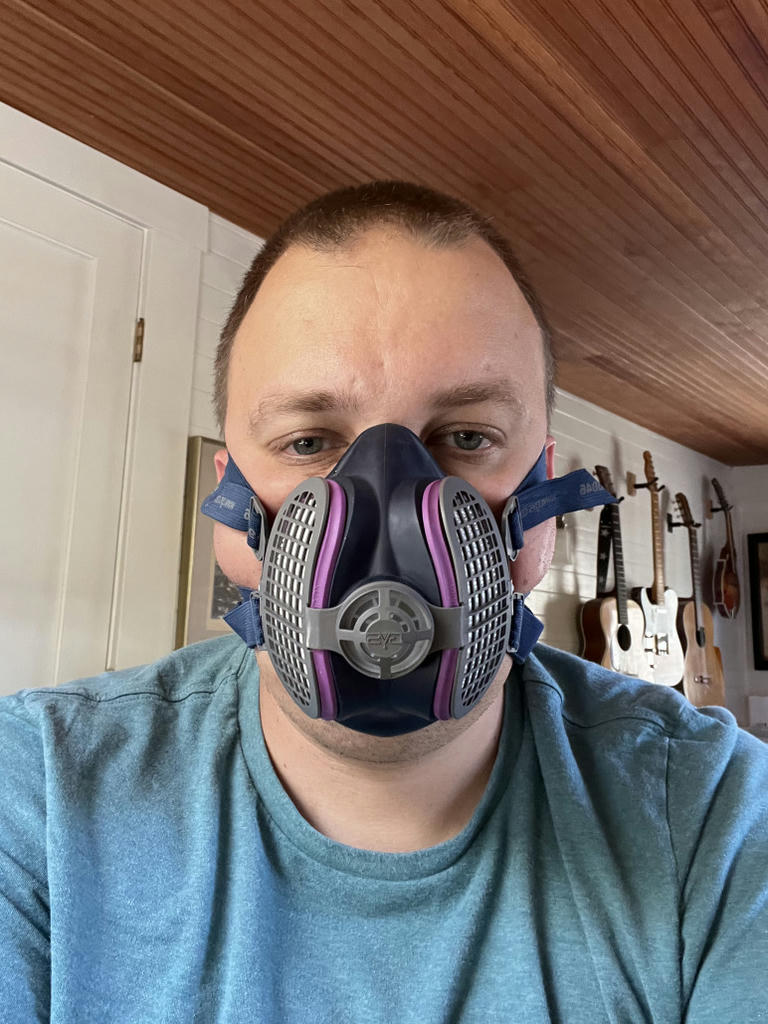
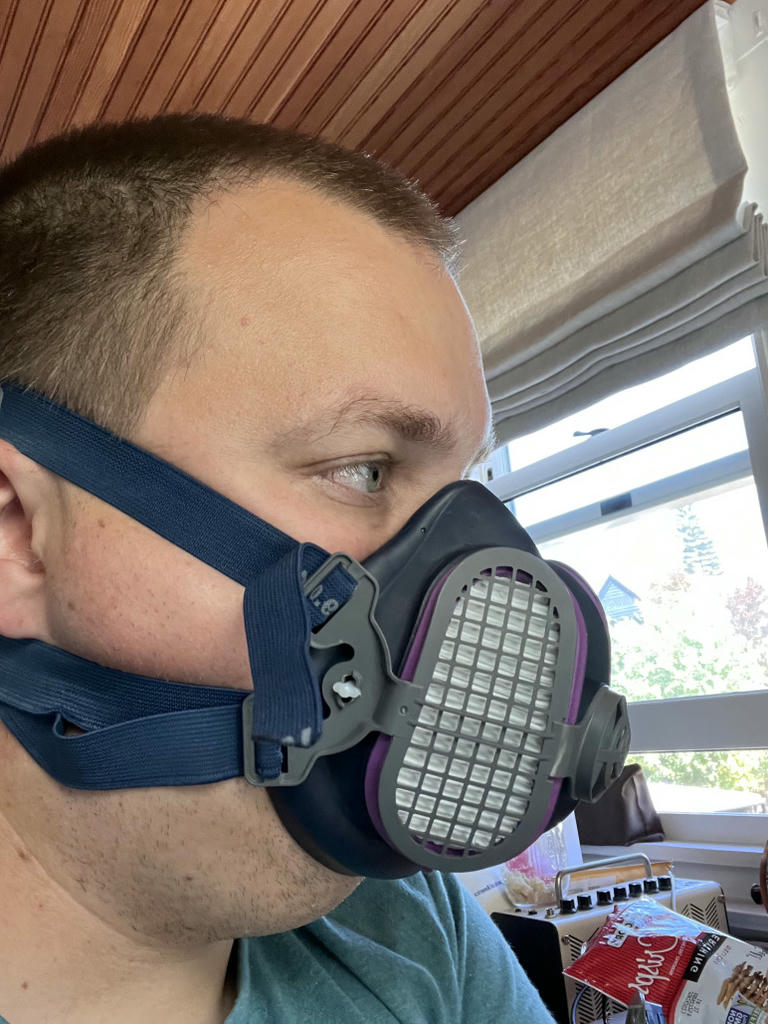

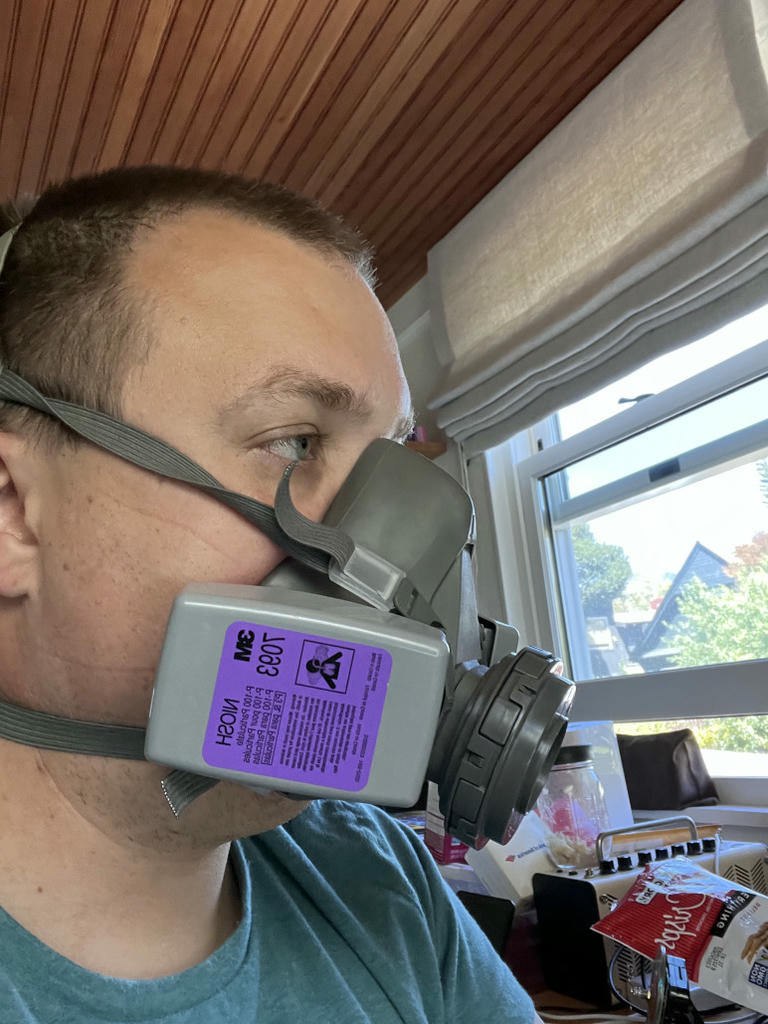
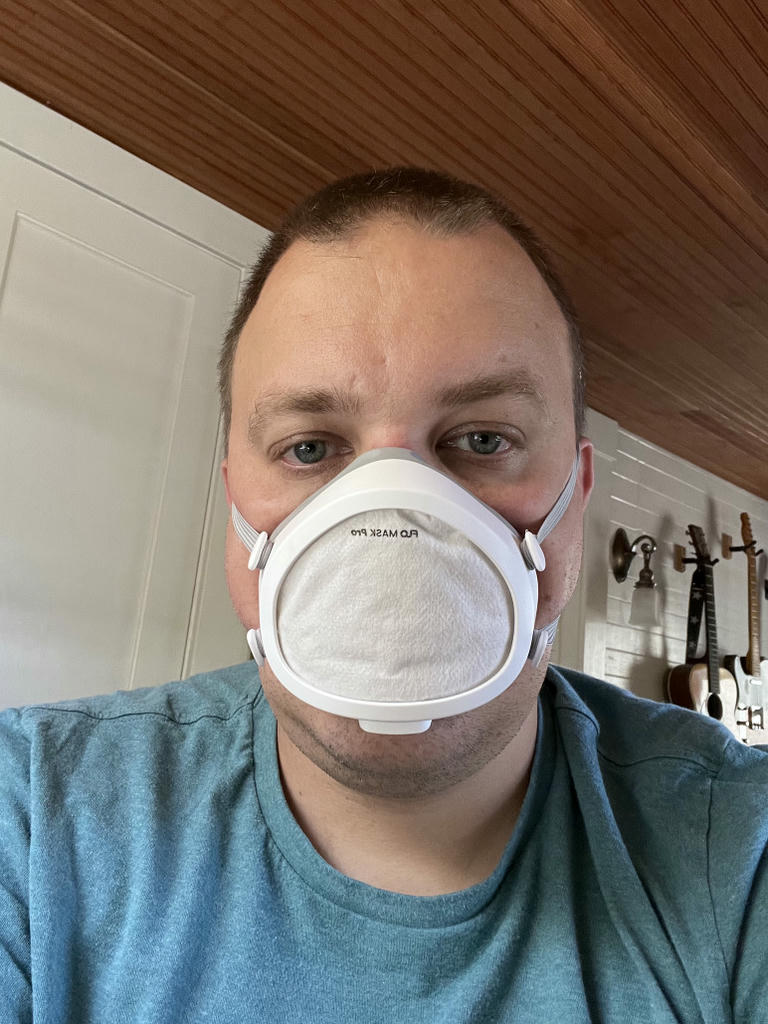
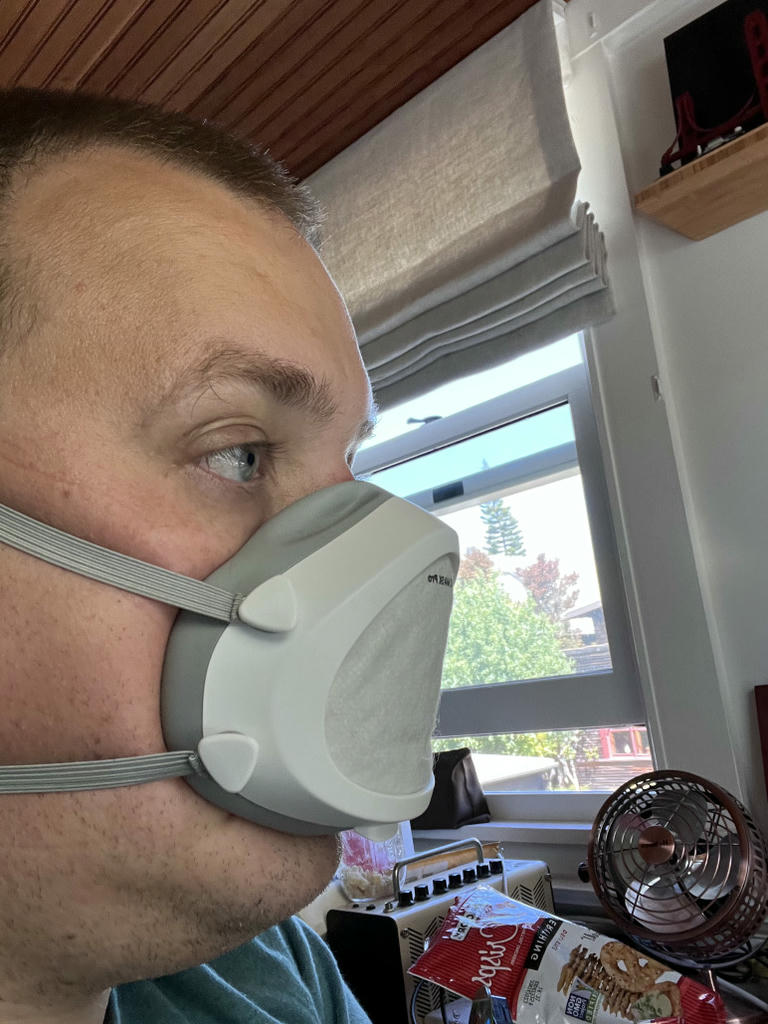
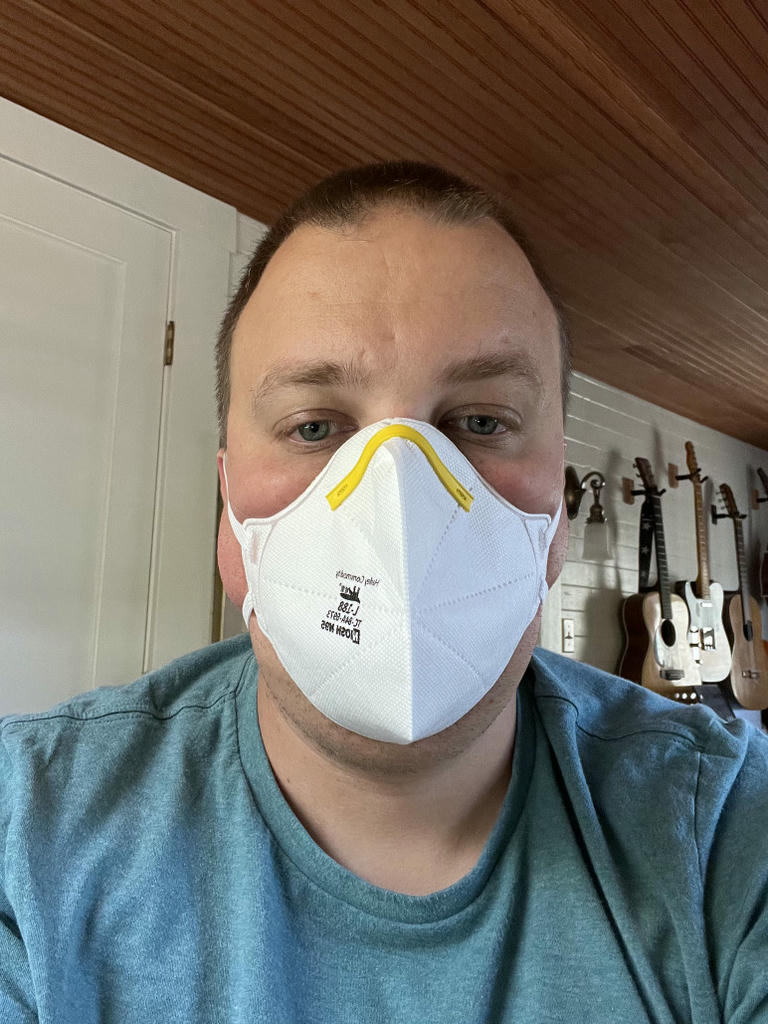

Want to comment on this? How about we talk on Mastodon instead? Share on Mastodon
Share on Mastodon